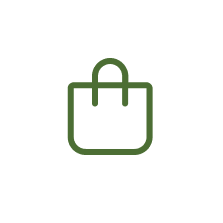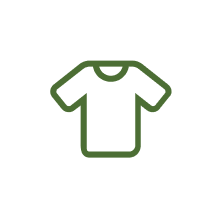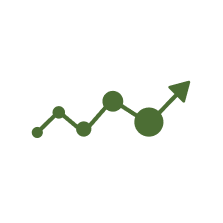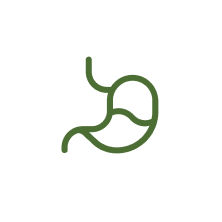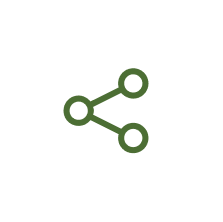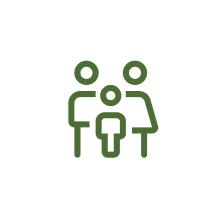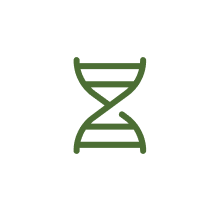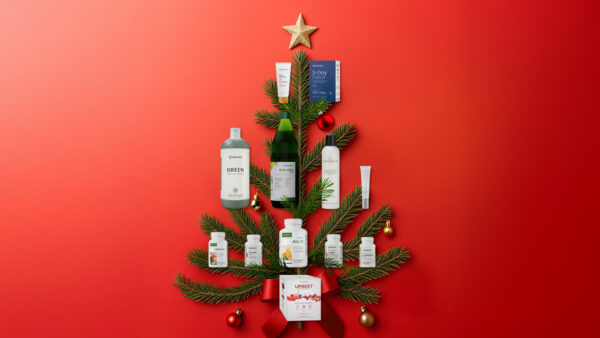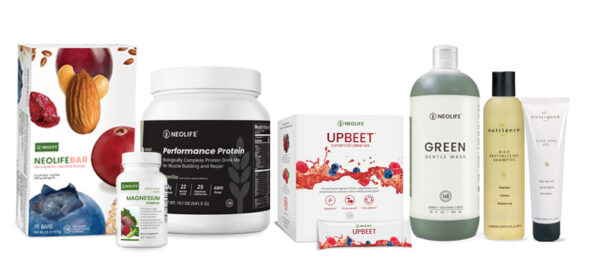The Earth’s oceans are a vast and precious resource, essential to sustaining life as we know it. They support a vast array of biodiversity, from plankton to fish to crustaceans and much more. Oceans are so vast that only a small portion has been explored, and thousands of new species are still being identified every year. Nevertheless, their importance is clear; oceans provide food and jobs to billions of people worldwide and produce roughly half of the planet’s oxygen.
Despite their extensive size, oceans are under significant threat from climate change and mainly human activities like overfishing, habitat destruction, and pollution. Ocean levels are rising, coral reefs are being bleached at alarming rates, invasive species are spreading, and some fish populations are dwindling which threaten delicately balanced food chains. While oceans may seem endless, they are a finite resource that need to be protected, along with their marine inhabitants.

Net Loss: Destructive Fishing Methods
Evidence in caves in South Africa show that humans have been eating fish for at least 140,000 years.3 Fishing equipment came much later, with the oldest known fishing hooks dating back to 40,000 BC. From there, other methods like fishing nets and spearfishing were developed and widely used by civilizations around the world.
As the Earth’s population grew exponentially, the demand for seafood also grew. Modern fishing has come a long way from the first simple fishing hooks and satisfying humanity’s hunger for seafood has resulted in some fishing methods that can be destructive if not handled with care.

- Trawling is dragging a net behind a boat and is often used to target crab, shrimp, and fish like flounder, but this indiscriminate method catches everything in its path.4 Turtles, whales, and dolphins are particularly susceptible to being caught up and killed in these drag nets. Additionally, trawling along the ocean floor destroys marine habitats and causes destruction of coral.
- Aquaculture or fish farming, is cultivating animals in controlled environment like tanks or other enclosures. While farmed fish reduces the pressure on the wild fish population, it can be harmful in other ways. Fish farms are often overcrowded, resulting in disease and the use of antibiotics which frequently runs off and pollutes the oceans along with waste and excess nutrients leading to algal blooms.4
- Driftnets or gillnets, are walls of nets that float in the ocean, carried freely by the current. This harmful method has been described as “invisible curtains of death” because it produces the highest amount of bycatch, or unwanted creatures that are caught, killed, and discarded.4 This method is so harmful that driftnets have been banned by the United Nations, the United States, and a multitude of other countries.
The Impact of Overfishing
Historically, only those who lived by the water and the wealthy could eat fresh seafood, but increasing incomes along with modern refrigeration and transportation methods allow even landlocked people to enjoy affordable, fresh seafood, resulting in exploding demand. A study published in 2021 estimates that by 2050, global fish consumption will increase by 80% while the total weight of aquatic harvest will nearly double.5
Bycatch, the unwanted fish and other creatures caught and discarded by fishing operations, is extremely wasteful and destructive. An estimated 9.1 million tons are discarded annually, making up about 10.8% of global aquatic catch. 6 In the 1980s, the global bycatch percentage was actually double what it is today. While this progress is encouraging thanks to regulations like the UN banning driftnets in 1992, there is still a long way to go to prevent waste and environmental harm. Discarded bycatch not only kills the critters caught unintentionally, but it also disrupts the balance of food chains, leading downstream effects like habitat degradation and the decline in future fish populations that billions of people rely on for sustenance and employment. Bycatch waste can be greatly reduced through strategies like more environmentally mindful fishing practices and finding new uses for bycatch.

As the human population has grown and seafood demand alongside it, many aquatic species have declined due to overfishing, bycatch, loss of habitat, and pollution. For decades, the Food and Agriculture Organization (FAO) of the United Nations has tracked fishery stocks, or subpopulations of fish species in a particular area, and found that the percent of overfished and unsustainable stocks went from 10% in 1974 to 35.4% in 2019.7 57.3% of fishery stocks were considered maximally fished in 2019, meaning they are at risk of becoming unsustainable if the harvested amount continues to increase.7
While there have been efforts around the world to protect fishery stocks and keep them sustainable, illegal fishing is pervasive, and the nature of the issue makes it difficult to determine its extent. A paper from 2009 attempting to quantify the extent of unauthorized fishing estimated that somewhere between 11 and 26 million tons of seafood, worth between $10 to $23.5 billion dollars, was fished illegally.8 A combination of weak international regulations, limited enforcement, fraud, and the sheer size of the oceans makes illegal fishing extremely challenging to monitor and stop.
While there are many challenges facing the oceans and their aquatic life, there is still hope for improvement and a sustainable future. Technological advances can make fishing methods more ecofriendly and improve the ability of officials to enforce regulations. Consumers play a critical role in whether or not seafood is sustainable by shaping the global market with their demand.
Fishy Business
Dubious fishing practices and opaque supply chains not only harm the environment, they also expose consumers to fraud and potential health risks. A 2021 analysis of 44 studies including more than 9,000 seafood samples from restaurants, fishmongers, and supermarkets in over 30 countries found that a shocking 36% of seafood was mislabeled.9 Sometimes the fish were labeled as different species in the same family, like 48% of king scallops tested were actually the less expensive Japanese scallop. In other cases, the fish was altogether swapped. A study found that 70% of the snapper tested in the UK was replaced by one of 38 different fish species. Samples from 180 restaurants in 23 countries revealed that one in three restaurants sold mislabeled seafood.9
Mislabeled fish can be harmful beyond the wallet. For example, a frequent substitute for tuna is escolar, a hard-to-digest fish with high wax ester content that can cause stomach upset. Seafood is one of the most internationally traded food commodities with complex and opaque supply chains, leading to many opportunities for misidentification, whether inadvertently or deliberately to deceive consumers into thinking they are getting a more expensive species.
Choosing Sustainable Seafood
While it may not seem like individuals have the power to influence what is happening in the middle of the ocean, we as consumers wield great power by voting with our pocketbooks. By being selective about what we consume and increasing the demand for sustainable seafood, we can encourage companies to invest in transparent supply chains and sustainable sourcing.
It can be difficult to ascertain what is ethical and sustainable, but there are guides to help. The world-renowned Monterey Bay Aquarium has a seafood watch guide with recommendations for responsible seafood choices. Their recommended best choices include:10

An easier method is to look for seafood that is certified sustainable. There are various independent organizations that verify that seafood meets specific sustainability and ethical criteria. Some of these programs include the Marine Stewardship Council, Friend of the Sea, Ocean Wise, and FishWise. They certify consumer seafood products by auditing fisheries, restaurants, fishing methods, and chain of custody to ensure the products are sustainable and accurately labeled. Choosing seafood products and restaurants with these certifications helps reduce harm to aquatic environments and increases consumer confidence in labeling accuracy.
The Importance of Omega-3s
Seafood, particularly fatty fish including anchovies, salmon, and tuna, are rich sources of omega-3s, which are healthy fats that support cardiovascular health, cognitive function, balanced inflammation, joint health, and more. The American Heart Association recommends eating at least two 3-ounce servings of fatty fish a week, but most people fall short of these targets.11 Eating seafood is a great way to obtain these important nutrients, but unfortunately a lot of seafood contains contaminants like mercury, heavy metals like lead, PCBs, and pesticides. Just because seafood is certified sustainable, it is not necessarily free from all contaminants. Some species tend to have more contaminants than others, so it’s important to choose seafood carefully but it adds more complexity to decisions when layered on top of sustainable seafood guidelines. Fish oil supplements can be a great way to increase omega-3 intake in a simple manner, but even then it’s important to choose wisely because some brands are more stringent with quality control and test for more contaminants than others.
The impact of bad fishing practices goes beyond whole seafood; it affects byproducts like fish oils too. There are tons of fish oil supplements on the market, and they are not all created equal, many are made with sources that contribute to overfishing and environmental degradation. Some of the independent organizations also certify products like fish oil, assuring consumers that their supplements are sustainably sourced and are made from the fish they say they are.
Get Hooked on NeoLife Omega-3 Plus
NeoLife is a company that cares about the future of our planet and takes sustainability seriously. Omega-3 Plus is a product that reflects their commitment to being responsible stewards of the environment. Omega-3 Plus is made with 100% wild-caught, independently certified sustainable fish oil from anchovies, mackerel, salmon, sardines, and tuna. This ensures the product is responsibly sourced and does not harm wild fishery stocks.
A three-capsule serving of Omega-3 Plus provides the omega-3 equivalence of approximately one serving of fatty fish. It contains 1,070 mg of eight standardized omega-3s including EPA, DHA, and DPA. Omega-3 Plus is screened for over 200 contaminants and meets or exceeds global standards to provide exceptional purity and safety. A unique “molecular differentiation” process ensures maximum purity, potency, and bioavailability.
The omega-3 profile in Omega-3 Plus has been clinically studied in humans and shown to be bioavailable, readily absorbed and assimilated into cell membranes within just 4 weeks.*12 It is cardio-protective and shown to reduce triglycerides by 17% and improve the omega-3 index by 38% in 8 weeks.* Furthermore, the study revealed that the omega-3 profile helped balance normal inflammation and lowered the inflammatory index by 68%.*

Omega-3 Plus is an effective, pure fish oil that is sustainably sourced so you can feel good about what you are putting into your body and rest assured knowing it is an ocean-friendly product.
Seafood is delicious and often healthy, but choosing what fish to eat or which fish oil to supplement with can be a fraught decision with big impacts on your health and the planet. Luckily there are tools like guides and certifications that can help guide conscientious decision making.
Oceans are a vast, valuable resource and it is up to everyone to be responsible stewards of the Earth so future generations can continue to enjoy the broad biodiversity and beautiful aquatic environments that remain today.
Learn more about Omega-3 Plus »

References
- U.S. Geological Survey. Top 10 Things You Didn’t Know About the Ocean. June 24, 2022.
- Rafferty, J.P. & Riley, P. How Deep Is the Ocean? Encyclopedia Britannica, Apr 10 2024.
- British Library. Fishing From the Earliest Times. June 16 2015.
- Turtle Island Restoration Network. Destructive Fishing Methods. 2025.
- Naylor, R.L., et al. Blue Food Demand Across Geographic and Temporal Scales. Nature Comms 12 (2021): 5413.
- Gilman, E., et al. Benchmarking Global Fisheries Discards. Scientific Reports 10 (2020): 14017.
- FAO. The State of World Fisheries and Aquaculture 2022. Rome 2022.
- Agnew, D.J., et al. Estimating the Worldwide Extent of Illegal Fishing. PLOS ONE 4 (2009): e4570.
- Leahy, S. Seafood Fraud Happening on a Vast Global Scale. The Guardian, Mar 15 2021.
- Monterey Bay Aquarium Seafood Watch. National Seafood Guide. Updated Mar 14 2025.
- American Heart Association. Fish and Omega-3 Fatty Acids. Aug 23 2024.
- Carughi, A. & Perelman, D. Effect of Omega-3 Fatty Acid Supplementation on RBC Membrane Composition. FASEB J 22 (2008): 1094.2.



